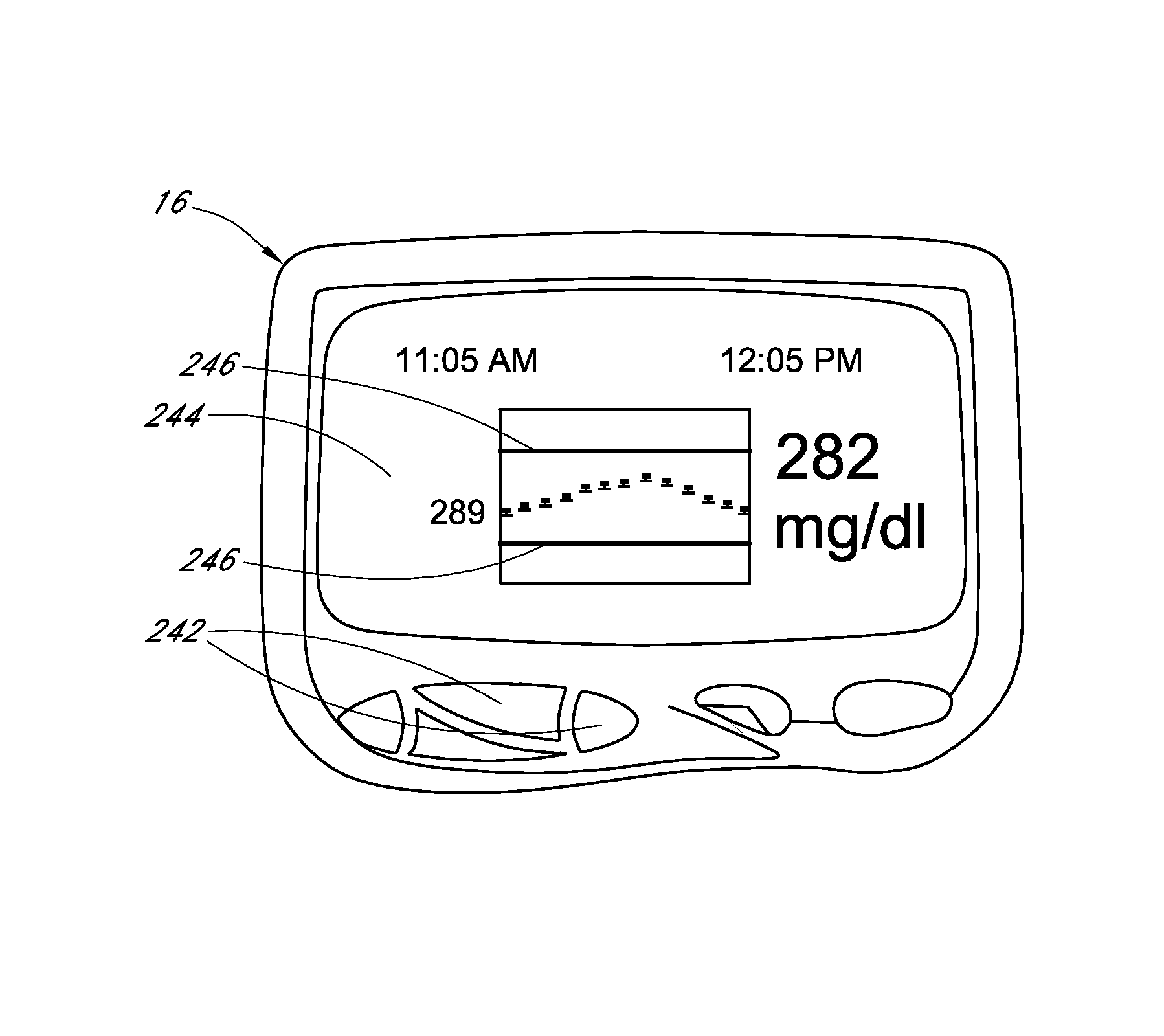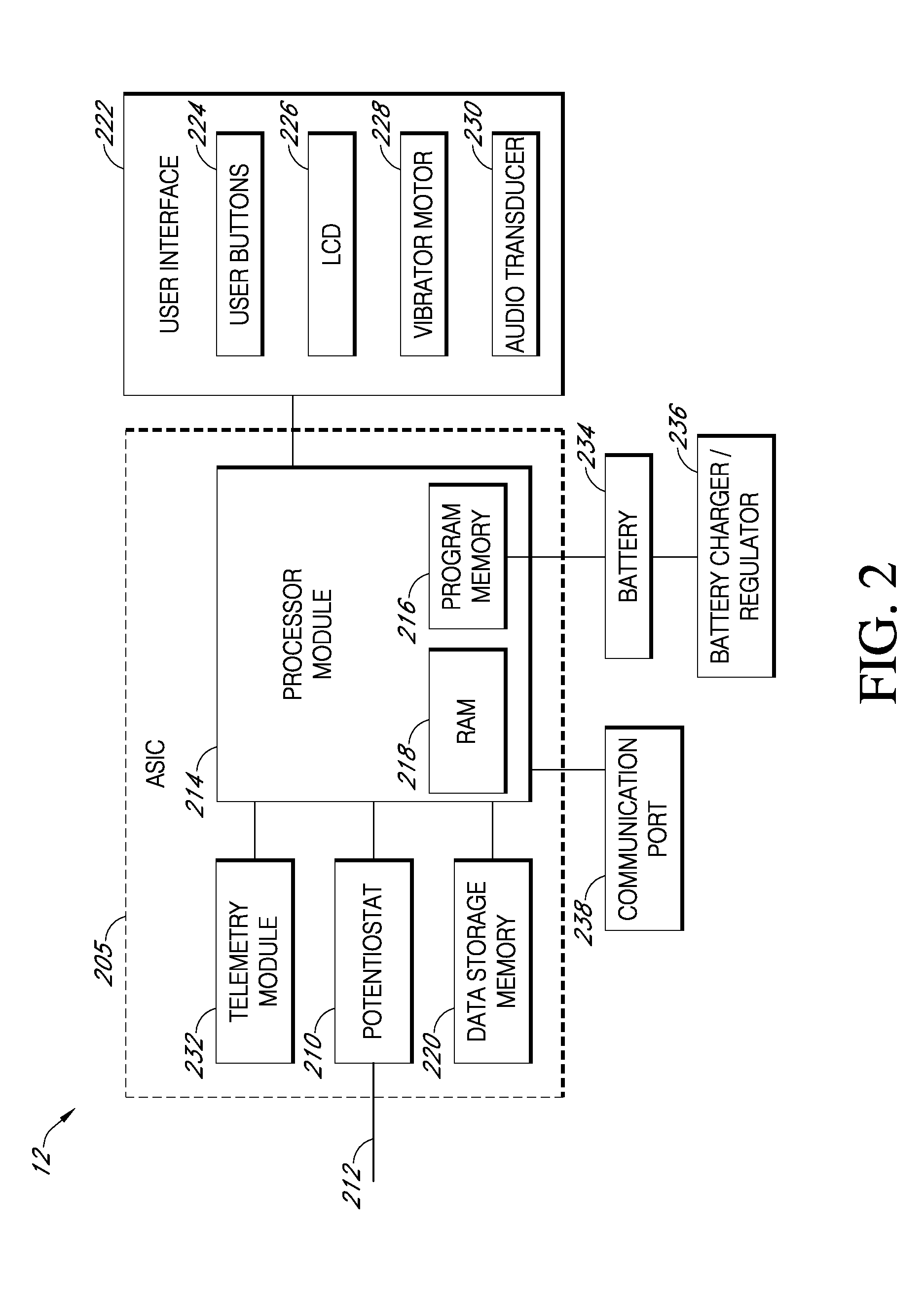Systems and methods for providing sensitive and specific alarms
a technology of specific alarms and alarms, applied in the field of analyte sensor data processing, can solve the problems of not knowing if the blood glucose value is going up (higher), affecting the user experience, and causing dangerous side effects, etc., and achieve the effect of improving the user experien
- Summary
- Abstract
- Description
- Claims
- Application Information
AI Technical Summary
Benefits of technology
Problems solved by technology
Method used
Image
Examples
example 1
Low Threshold Alert
[0204]In this example, the processor module may be configured to receive sensor data (510) and evaluate the sensor data using a first function (520) to determine whether the “real-time” glucose value has crossed a first threshold (80 mg / dL) and using a second function (530) to determine whether the predicted glucose value will cross a second threshold (55 mg / dL) within 15 minutes (PH). The processor module may be configured to actively monitor data (710) associated with glycemic condition after a hypoglycemic indicator has been triggered based on the first or second function to determine whether a state change transition should occur. In this example, the following three inactivation conditions exist (to transition from active or acknowledged to inactive): 1) if the glucose value increases by more than a predetermined amount (15 mg / dL) and the glucose value is above the first threshold (80 mg / dL) since activation of the hypoglycemic indicator; 2) the rate of chang...
example 2
Actionable Alerts Associated with Hyperglycemic Conditions
[0211]Advantageously, the user may be alerted only when it is likely that a user action is necessary. In one such example, the user may still be alerted as soon as the glucose value crosses an alert threshold. However, a user may also select to enable the wait time under certain conditions, for example, when a hyperglycemic excursion is correlated with known meal ingestion. In some embodiments, whether or not the wait time is enabled, annoying repeated alerts when the glucose value oscillates around the threshold may be minimized or eliminated, while ensuring that if the glucose value crosses the threshold twice due to reasons that are likely not related, then the user is alerted. For example, the user may be alerted once after the glucose value goes high due to carbohydrate intake (hyperglycemic alert) or not at all. Then the user takes insufficient amount of insulin, which causes the glucose value to go down a little bit, b...
PUM
 Login to View More
Login to View More Abstract
Description
Claims
Application Information
 Login to View More
Login to View More - R&D
- Intellectual Property
- Life Sciences
- Materials
- Tech Scout
- Unparalleled Data Quality
- Higher Quality Content
- 60% Fewer Hallucinations
Browse by: Latest US Patents, China's latest patents, Technical Efficacy Thesaurus, Application Domain, Technology Topic, Popular Technical Reports.
© 2025 PatSnap. All rights reserved.Legal|Privacy policy|Modern Slavery Act Transparency Statement|Sitemap|About US| Contact US: help@patsnap.com



